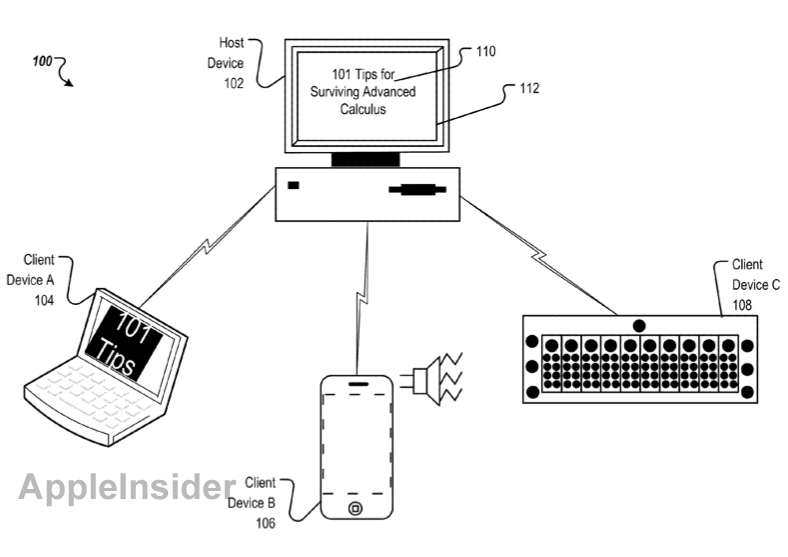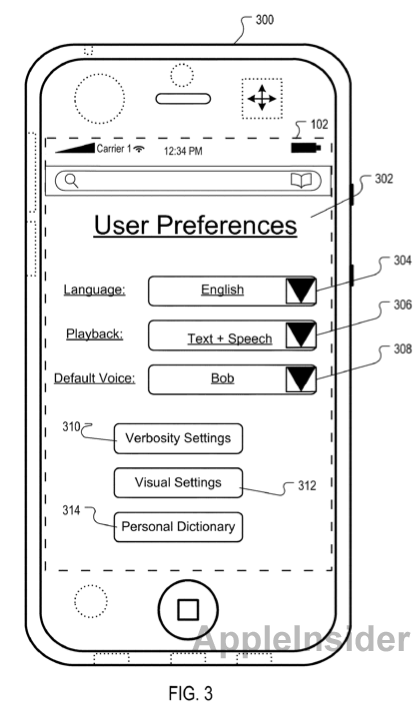Apple exploring advanced system for educating students with disabilities
The U.S. Patent and Trademark Office this week revealed a new patent application from Apple entitled "External Content Transformation." Discovered by AppleInsider, the document describes a method for disseminating content from a host computer in a format tailored to accommodate a user's disability, identified from their client machine.
For example, Apple could dynamically distribute content tailored for relatively simple needs, like larger font sizes or screen sizes. In more advanced examples, content could be re-purposed as synthesized speech in a variety of languages, or in Braille.
In the patent application, Apple notes that computers are now very capable of accommodating the disabilities of individual users, with technologies like screen reading software and electronic Braille devices making it possible for visually impaired users to access a device.
But the company also realizes that these technologies only account for the disabilities and preferences of a single user at a time. In addition, technology designed for disabled users can be taxing on a local system, requiring the content to be transformed on the client machine according to a user's needs and preferences.
Apple's solution would have a host device that would have content in a number of formats that could accommodate specific disabilities of users, or user preferences. Multiple users would be able to experience content at the same time, each according to their own needs.
"A host device can share content with many users, without needing to do significant processing on the host device to accommodate users' needs and preferences," the application reads.
In Apple's example, a person teaching a class would control a host device, and information would be disseminated out to students' machines in a format that would make it possible for them to receive the lesson. In addition to new formats tailored for specific disabilities, the technology would also be able to comply with custom preferences set by the student, such as certain font styles, spacing, or natural languages.
Client devices that could communicate with the host machine include computers, mobile devices like an iPhone or iPad, and Braille output devices, to name a few. A shared conversion engine among the host and client machines would expedite the process of reformatting or re-purposing the content, making it fast and efficient.
The proposed invention made public this week by the USPTO was first filed by Apple in August of 2009. It is credited to Christopher B. Fleizach.
The disclosure also comes as Apple has touted the ability of its iPad to reach out to disabled users who might struggle with traditional computers. The video, embedded below, was first shown off at Wednesday's iPad 2 unveiling.
The iPad was shown in use at the Center for Communication Enhancement at Children's Hospital Boston, where it has been used to assist children with autism. The video also highlighted how the iPad has been put to use in education, allowing students to interact with content in a new and unique way.
 Neil Hughes
Neil Hughes












 Malcolm Owen
Malcolm Owen
 William Gallagher and Mike Wuerthele
William Gallagher and Mike Wuerthele
 Christine McKee
Christine McKee
 William Gallagher
William Gallagher

 Marko Zivkovic
Marko Zivkovic







